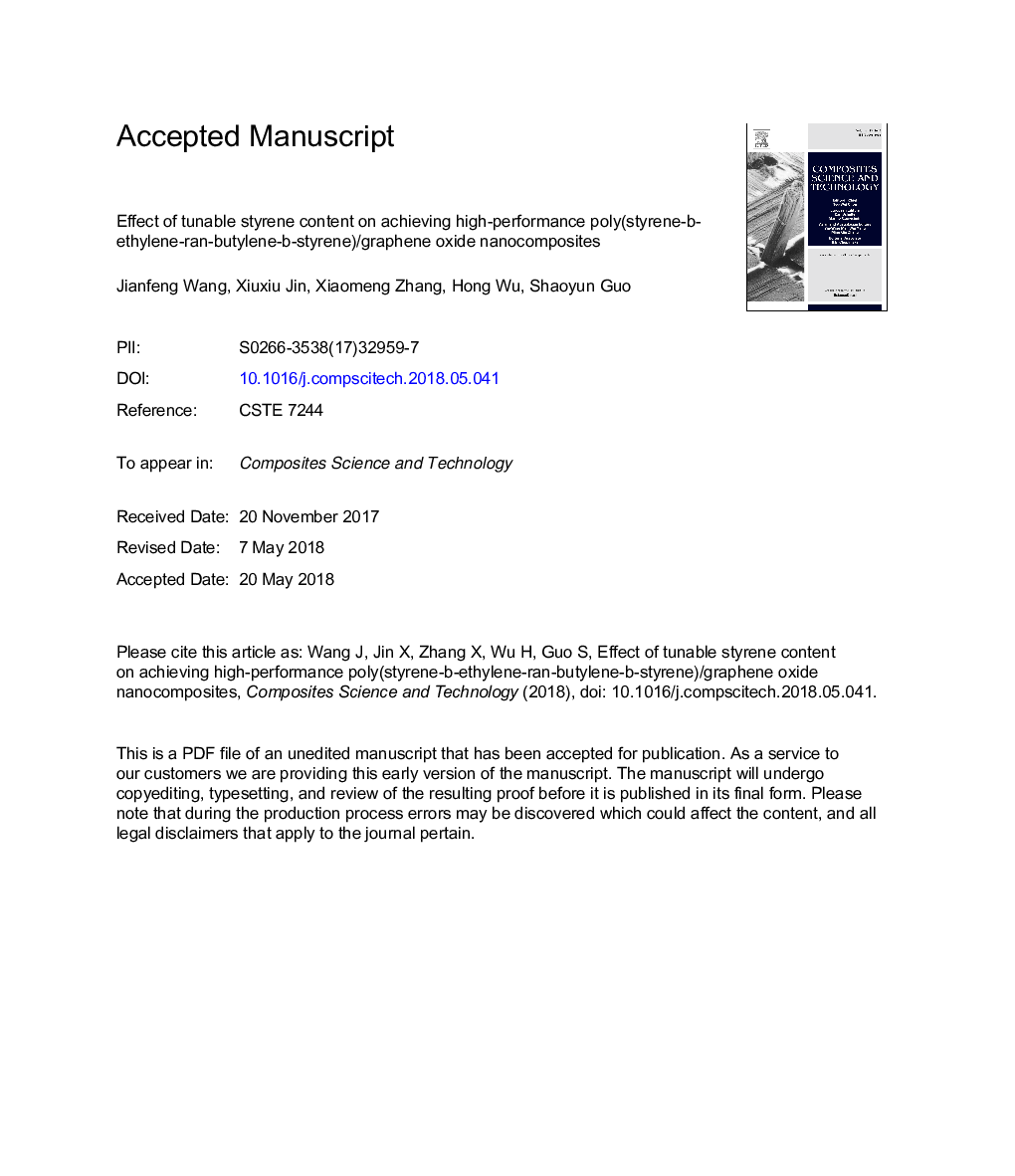| Article ID | Journal | Published Year | Pages | File Type |
|---|---|---|---|---|
| 7214261 | Composites Science and Technology | 2018 | 22 Pages |
Abstract
In this paper, two poly(styrene-b-ethylene-ran-butylene-b-styrene) (SEBS) with different styrene segment content were adopted to explore the relationship between varying Ï-Ï stacking interaction and the mechanical performance of polymer composites. The results showed that the high styrene content on SEBS (SEBS-30, 30â¯wt% styrene segment) endows SEBS a stronger Ï-Ï stacking interaction with GO and a better dispersion of GO in the matrix than that in SEBS with low styrene content (SEBS-12, 12â¯wt% styrene segment), resulting in a high efficiency on enhancing the performance of SEBS. By adding 0.5â¯wt% GO, the tensile strength and modulus of SEBS-30 was increased by 44% and 64%, respectively, while that of SEBS-12 was increased by 24% and 39%. Furthermore, the GO also exhibited the ability to toughen SEBS via forming microcrack and GO-induced fibrillation of SEBS during the fracture process. The elongation at break and fracture toughness of SEBS-30 was increased by 10% and 64%, respectively. This study gives us a deep insight into the influence of varying Ï-Ï stacking interaction between graphene oxide (GO) and polymer on achieving high-performance polymer nanocomposites.
Related Topics
Physical Sciences and Engineering
Engineering
Engineering (General)
Authors
Jianfeng Wang, Xiuxiu Jin, Xiaomeng Zhang, Hong Wu, Shaoyun Guo,
